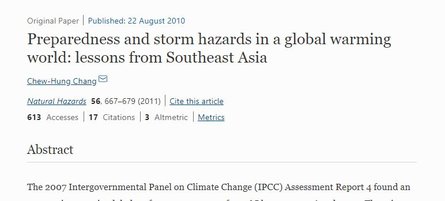
The 2007 Intergovernmental Panel on Climate Change (IPCC) Assessment Report 4 found an average increase in global surface temperature of 0.74°C between 1906 and 2005. There is general agreement in the literature that the frequency of extreme precipitation events in Southeast Asia will increase with global warming. In particular, the potential impact of associated storm hazards will render the densely populated countries in Southeast Asia vulnerable to such changes in precipitation events. One main adaptation strategy given such impending changes is preparedness. Using existing literature and historical meteorological data, this paper establishes that Southeast Asia is indeed experiencing storms of higher intensities and more frequently. Two case of extreme storm event in Southeast Asia, the extreme high rainfall event in December 2006 in Southern Johor and Typhoon Vamei, are presented to consider the implications of the increased storm activities due to global warming. These two examples also discuss the need for preparedness in adapting to the impact of global warming.
